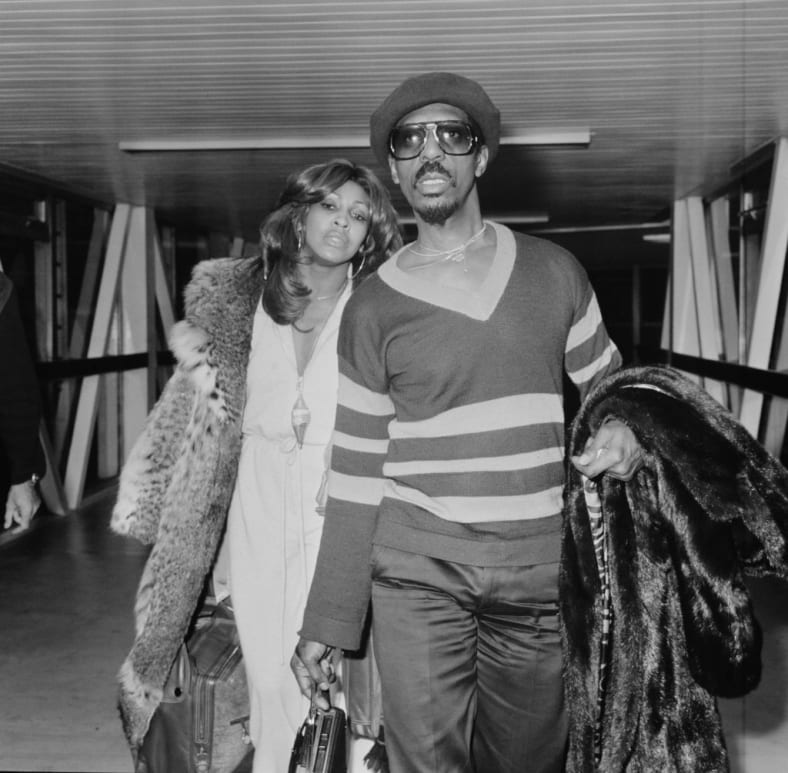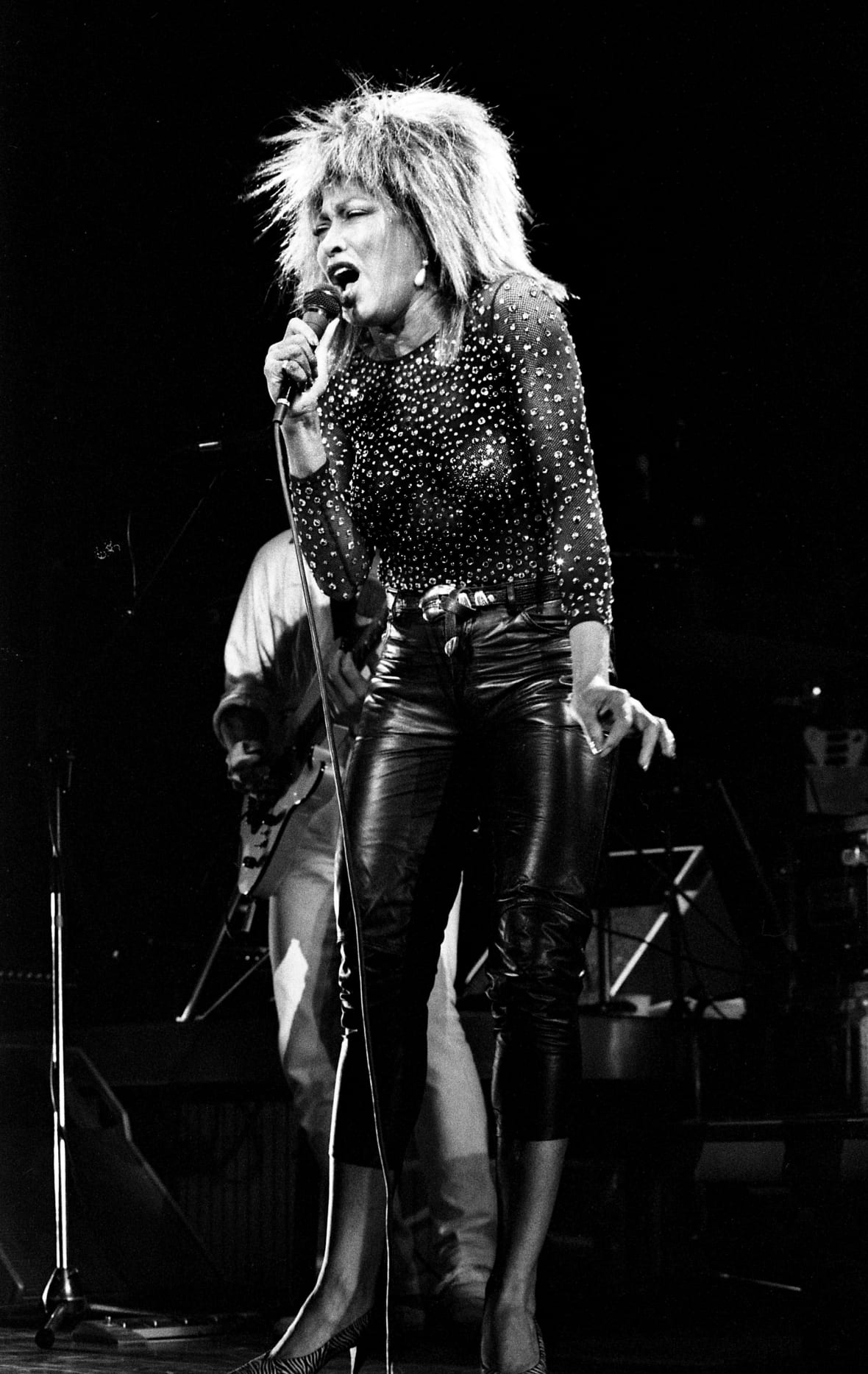Tina Turner, the queen of rock and roll, dies at 83
The Rock and Roll Hall of Famer was known for her pioneering role in rock and soul music as well The post Tina Turner, the queen of rock and roll, dies at 83 appeared first on TheGrio.

The Rock and Roll Hall of Famer was known for her pioneering role in rock and soul music as well her resilience in overcoming adversity.
In a career that spanned more than five decades and three musical genres, Tina Turner revolutionized the music industry, earning herself the well-deserved title “the Queen of Rock ‘n’ Roll.”
Turner died Wednesday at 83.
“Tina Turner, the ‘Queen of Rock’n Roll’ has died peacefully today at the age of 83 after a long illness in her home in Küsnacht near Zurich, Switzerland,” according to a statement in Rolling Stone. “With her, the world loses a music legend and a role model.”
Turner won a dozen Grammy awards, sold more than 100 million records worldwide, received a star on the Hollywood Walk of Fame and a Kennedy Center Honor. She was twice inducted into the Rock and Roll Hall of Fame — once with ex-husband Ike Turner in 1991 and most recently in 2021 in honor of her luminous international superstar solo career.

Orchestrating one of the greatest comebacks in music, she set out on a path that was on her terms. “I had a dream. My dream [was] to be the first Black rock ‘n’ roll singer to pack [stadiums] like the [Rolling Stones],” Turner recounted in the 2020 HBO documentary, “Tina,” which explored her triumphs, struggles and traumas.
Journalist Kurt Loder, who co-wrote her best-selling 1986 memoir, “I,Tina: My Life Story,” said her voice combined “the emotional force of the great blues singers with a sheer, wallpaper-peeling power that seemed made to order for the age of amplification.”
Daphne A. Brooks, a scholar of African American studies, wrote in The Guardian that Turner set a new path for Black female artists in an industry “that had long marginalized and overlooked the pioneering contributions of [Black] women and then remade herself again at an age when most pop musicians were hitting the oldies circuit. Turner’s musical character has always been a charged combination of mystery as well as light, melancholy mixed with a ferocious vitality that often flirted with danger.”
Nutbush City Limits
Turner was born Anna Mae Bullock on Nov. 26, 1939, in Nutbush, Tennessee, in a poor, sharecropping family. Turner was the youngest of three daughters of Floyd and Zelma Bullock, who had a tumultuous relationship. Floyd Bullock was abusive toward his wife. The couple often moved around with their daughters — even splitting up the girls to live with other relatives. Turner moved in with her paternal grandparents, both of whom were deacons in a local church. There, she soon began singing during services.
When Turner turned 11, Zelma Bullock left Floyd Bullock and moved to East St. Louis, Illinois. In her 1986 memoir, I, Tina: My Life Story, Turner said she never felt her mother’s love and that her mother “was a very young woman who didn’t want another kid.”
Floyd Bullock remarried and moved to Detroit two years after Zelma Bullock’s departure. All three sisters were sent to live with their maternal grandmother in Brownsville, Tennessee, where they would stay until she passed away in the 1950s.
Sixteen-year-old Turner and her sisters reunited with Zelma in 1952 when they moved to East St. Louis. It was there that Turner discovered a new love for music and a new desire to sing, spending significant time at the famed Manhattan Club. In 1956, she met Ike Turner who played at the club with his group, Kings of Rhythm.

Falling ‘Into a Trance’
In her autobiography, she disclosed that she “almost went into a trance” when Ike played with his band. He didn’t respond to Turner’s requests to sing with his group; he promised to call her but he didn’t. One night the following year, she grabbed the microphone during an intermission and sang B.B. King’s “You Know I Love You.” Turner soon became a central part of the ensemble, and she would credit Ike with teaching her voice control and key elements of performance.
Upon graduating from high school in 1958, Turner began working as a nurse’s aide at Barnes-Jewish Hospital. During this period, she determined that she had two options: remain a nurse’s aide or sing. “I would have been lost in my life at that point without him [Ike]. I mean, I could do two things: work in a hospital or sing in Ike’s band,” Turner said in her autobiography. “I didn’t know anything else. Or anyone else. And I wanted to sing.”
Without asking or even letting her know, Ike changed her name to Tina. And the band was touring as the Ike & Tina Turner Revue. The new ensemble gained a reputation as one of “the hottest, most durable, and potentially most explosive of all R&B ensembles.” In 1960, the group achieved its first big recording hit, “A Fool in Love,” leading to a string of hit singles to follow.
Raising Her Profile
By the mid-1960s, Tina was making a name for herself, receiving rave reviews for various solo appearances on variety shows such a “American Bandstand” and “Shindig!” Her profile was also raised during performances with the Revue on “Hollywood A Go-Go.”
After watching the group’s performance in a West Hollywood club in 1965, music producer Phil Spector asked the performers to appear in the concert film, “The Big T.N.T. Show” (1966). Spector was also Tina’s producer on the recording, “River Deep — Mountain High” (1966), which Ike demanded that be credited to the two of them. While not as popular as in the U.S., the recording became a huge hit in Europe and brought the revue more mainstream success.
Ike and Tina would tour the U.S.in 1969 as the opening act for the Rolling Stones, which garnered them more fans at home. The couple also produced some of popular music’s most notable hits, including a cover version of Creedence Clearwater Revival’s “Proud Mary” (1971) and “Nutbush City Limits” (1973). Tina wrote the latter song — a rock-country-soul crossing tune — in honor of her Tennessee home. Also in 1975, she made her film debut in The Who’s “Tommy” playing the Acid Queen.
Ike and Tina’s relationship, marred by Ike’s physical and drug abuse since they’d become a couple, fell apart during the 1970s. Their wedding date would become a subject of some speculation during their divorce proceedings in 1977. Ike claimed that the two were not legally married in 1962 because he was married to another woman at the time.
Tina also dealt with infidelity on Ike’s part. In her memoir, she recalls that moment she finally fought back, escaping it all in 1976 following an altercation in a Dallas hotel. They officially divorced in 1978. During their union, Ike and Tina had four sons, including two from an earlier relationship of Ike’s and one from an earlier relationship of Tina’s. (Craig, the son from Tina’s relationship with King of Rhythm saxophonist Raymond Hill, was found dead in his Studio City, California home in July 2018 from an apparent suicide. Ronnie, her son with Ike, died in December 2022 from complications of colon cancer and cardiovascular disease.)
During the 1970s, Turner would learn about Nichiren Shoshu Buddhism, which she noted offered her peace and helped her survive her marriage. She remained faithful to the teachings of The Soka Gakkai International, even in her later years.
‘I Was My Own Boss’
Despite the success with Ike and the Revue, Tina’s solo career floundered in the beginning. In her memoir, she noted that she left Ike with just “36 cents and a gas station credit card.” In their divorce settlement, she kept her stage name but gave up her share of their net worth including a home recording studio and publishing rights, totaling close to $500,000.
”My peace of mind was more important,” she said in an interview with Entertainment Weekly.
That sense of peace came at a significant price. Following the divorce, promoters sued to recoup their losses from canceled shows. And for almost two years, she received food stamps, lived with friends and performed in a cabaret show to make ends meet and pay off those debts. She also made guest appearances on variety television shows and on other artists’ records without much success. It was during a guest appearance on “Hollywood Nights” with Olivia Newton-John that she met her future manager, Roger Davies, who would help her reset her course.
“I was ready for a change,” she said in the HBO documentary. “That was the beginning of me taking control of my own performance. I was my own boss.”
But Turner faced a lot of resistance from record labels, Davies said in the HBO documentary. The most shocking account comes from John Carter, a record producer, songwriter and A&R representative for Capitol Records. Carter, who passed away in 2011, was credited with reviving Turner’s career in the 1980s and signing her to Capitol.
In an audio clip from a 2009 interview, included in the documentary, Carter recalled a conversation with a top executive who was especially angered by the move to sign Turner to the label. The executive called Carter and said: “You signed this old N- douchebag.” Carter affirmed his decision, saying he “was really happy about it.” The executive told Carter to finish the record, but he should know that “we’re going to do nothing” in terms of promotions.
Carter remained one of Turner’s greatest champions. The two produced her 1984 solo album, “Private Dancer,” which would become a massive success with the No. Billboard hit, “What’s Love Got To Do With It.” She won four Grammy Awards and the album sold more than 20 million copies worldwide.
In 1985, she co-starred with Mel Gibson in the film, “Mad Max Beyond Thunderdome,” contributing the hit song, “We Don’t Need Another Hero.” The following year, she published her memoir, “I, Tina,” with music journalist Kurt Loder, which was adapted into the 1993 biopic, “What’s Love Got to Do With It.” Angela Bassett starred as Tina and Laurence Fishburne played Ike.
Her later album successes included “Break Every Rule” (1986), “Tina Live In Europe” (1988), “Foreign Affair” (1989) and “Wildest Dreams” (1996), which featured a cover of John Waite’s “Missing You.” She also recorded songs for film soundtracks, including the James Bond title song, “Goldeneye.” In 2004, she released a greatest-hits compilation, “All the Best” in 2004. And she also made guest appearances on other artists’ albums, most notably Herbie Hancock’s Grammy Award-winning “River: The Joni Letters” (2007), a tribute to Joni Mitchell.
Turner made her greatest mark touring with her signature energizing rock presence, which made her an international superstar. With an 180,000 audience-count in 1988, she earned the Guinness World Record for the largest paying audience for a solo performer. She embarked on her final tour, “Tina! 50th Anniversary Tour,” which became one of the highest-selling ticketed shows of 2008 and 2009. She eventually retired from the music business, except for occasional appearances and recordings.
Later Career
Turner, who had called Switzerland home for many years, became a Swiss citizen in 2013. That year, at age 73, she married her longtime partner Erwin Bach, a German record executive. And she graced the cover of Dutch Vogue magazine, making her the magazine’s oldest covergirl to date.
In addition to “I,Tina,” Turner also penned her second autobiography, “My Love Story” (2018) and the self-help book, “Happiness Becomes You: A Guide to Changing Your Life for Good” (2020 with Taro Gold and Regula Curti).

Turner was honored with a Grammy Lifetime Achievement Award in 2018. That year, with collaborators Phyllida Lloyd and Stage Entertainment, she also debuted her musical, “Tina,” starring actress Adrienne Warren in the title role. The musical played on Broadway in 2019. She also briefly came out of retirement in July 2020 to collaborate with Norwegian producer Kygo for a remix of “What’s Love Got to Do with It,” which made her the first artist to have a Top 40 hit in seven consecutive decades on the U.K. charts.
During the debut of her musical, she said in an interview with The Times of London that she forgave Ike for the years of abuse. “As an old person, I have forgiven him, but it would not work with him … He asked for one more tour with me, and I said, ‘No, absolutely not.’ Ike wasn’t someone you could forgive and allow him back in.”
Turner is survived by her husband Bach and two of her four sons.
TheGrio is FREE on your TV via Apple TV, Amazon Fire, Roku, and Android TV. Please download theGrio mobile apps today!
The post Tina Turner, the queen of rock and roll, dies at 83 appeared first on TheGrio.












